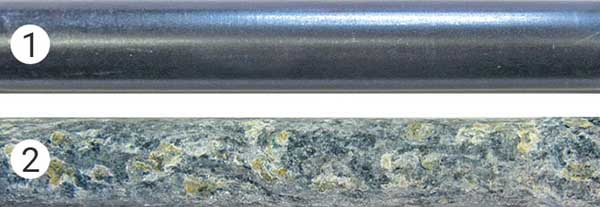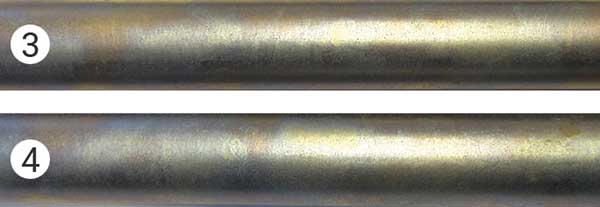We are expanding
our material know-how
and test services with
the DEKRA laboratories!
Find out more in our
press release.
News:
Titanium alloys and titanium purity of medical instruments and implants according to
Accredited test laboratory
for materials testing, product testing & failure analysis.
Your specialist for metals,
plastics, elastomers.
We are expanding
our material know-how
and test services with
the DEKRA laboratories!
Find out more in our
press release.
News:
Titanium alloys and titanium purity of medical instruments and implants
according to DIN EN ISO 832
Accredited test laboratory
to DIN EN ISO / IEC 17025.
Your specialist for metals,
plastics, elastomers.
Salt spray test.
The salt spray test is well suited for comparing materials and corrosion protection systems with one another. It is used as a test method for the quality control of coatings in all areas of industry.
Salt spray test according to DIN EN ISO 9227 (NSS test)
With the help of a salt spray test according to DIN EN ISO 9227 (NSS test), the corrosion resistance of a material or an anti-corrosion coating on it can in principle be determined.
During the test, the test items are in a chamber in which a 5% saline solution with a controlled pH value is continuously nebulized at a temperature of 35 ° C. The mist is deposited on the test objects and covers them with a corrosive film of salt water.
Exposure times are for example: 96 hours, 240 hours, 480 hours, 720 hours or other test durations. The test durations are based on the expected corrosion resistance of the tested material system.
After completion of the salt spray test, the test items are rinsed with deionized water in order to remove loosely adhering corrosion products. The corrosion attack on the tested material system is then assessed visually or using electrical and microscopic methods.
Carrying out a salt spray test according to DIN EN ISO 9227
The components / test items / samples to be tested are placed in the salt spray chamber. We test with a white chamber, type SC KWT 450, with a test space of 480 liters, a maximum load of 100 kg and a brine storage tank of 180 liters.
The parts to be tested are distributed in such a way that no condensate can drip onto or touch other test objects. Sheets and other parts (e.g. screws) must be positioned at an angle (approx. 20 °) from the vertical. The following parameters must be observed in the salt spray test with NaCl solution in accordance with DIN EN ISO 9227:
- pH 6.5 to 7.2;
- Concentration of the NaCl solution 50 ± 5 g / l
- Chamber temperature 35 ° C ± 2 ° C
- Overpressure at the nebulization nozzle 0.7 to 1.4 bar
- condensed volume of the sprayed solution 1 to 2 mL per hour
After the salt spray test is complete, the tested materials are rinsed with deionized water to remove loosely adhering corrosion particles. The degree of corrosion on the tested material is then assessed and recorded visually or using electrical and microscopic methods. You will then immediately receive a digital test report from us by email.
Carrying out a salt spray test according to DIN EN ISO 9227 (NSS test) on various pipe qualities

Galvanized pipe in delivery condition (1)
Galvanized pipe after 96h NSS test (2)


